Discover 10 ways to take care of your teeth and gums naturally—from oil pulling and tongue scraping to our better-than-toothpaste powder recipe!
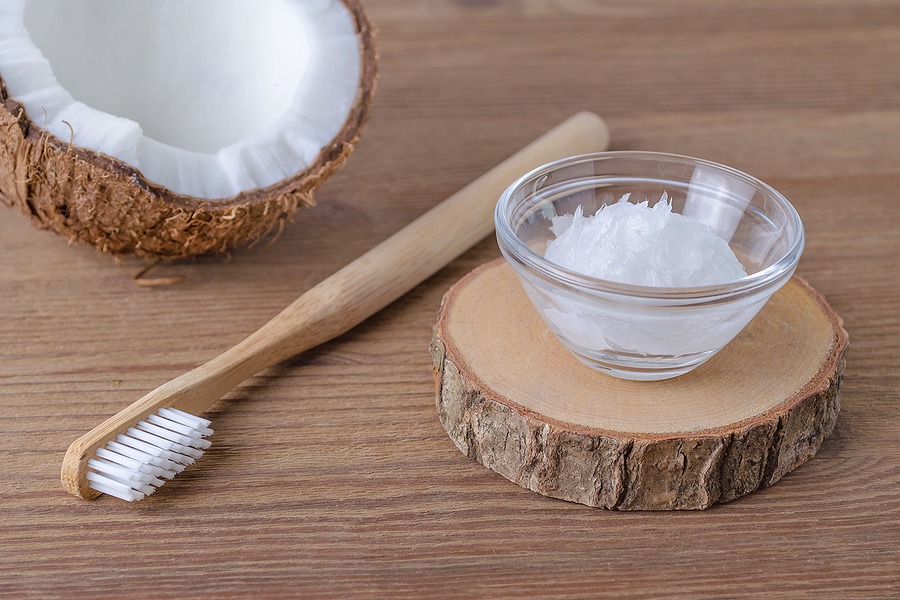
Are you taking the time to care for your teeth? It is one of the single most important preventative measures you can take for yourself and your overall health.
Poor oral health leads to gum disease, facial pain, infections of the mouth, and more serious health problems, including stroke, heart disease, dementia, kidney disease, diabetes, infertility, and cancer.1)”Poor Oral Health Increases Stroke Risk, UB Study Finds.” Poor Oral Health Increases Stroke Risk, UB Study Finds – University at Buffalo. October 25, 2000. Accessed July 27, 2019. http://www.buffalo.edu/news/releases/2000/10/4917.html.2)”Poor Oral Health Increases Stroke Risk, UB Study Finds.” Poor Oral Health Increases Stroke Risk, UB Study Finds – University at Buffalo. October 25, 2000. Accessed July 27, 2019. http://www.buffalo.edu/news/releases/2000/10/4917.html.
You May Also Enjoy:
“6 Reasons You Should Be Using Tooth Powder”
“How Much Money Will You Spend at the Dentist This Year?”
“Equisetum Hyemale (Horsetail): The BEST Plant for Tooth Health + 8 More Benefits!”
According to the ADA, over 60% of Americans skipped their last dentist visit. The main reasons were fear and the high cost of dental care.3)”Oral Health and Well-Being in the United JStates.” Ada.org. Accessed July 26, 2019. http://www.ada.org/~/media/ADA/Science and Research/HPI/OralHealthWell-Being-StateFacts/US-Oral-Health-Well-Being.pdf?la=en. But oral health doesn’t have to be expensive or scary.
Here are some easy ways you can care for your teeth, naturally.
From the Inside Out
A healthy mouth involves your entire body. To keep your mouth healthy, your body needs fat-soluble vitamins and minerals. These minerals and vitamins support the body as a whole, but also create saliva that is more mineral-rich, which your body uses to protect your teeth.
You May Also Enjoy:
One great way to get these nutrients is with herbal infusions. A nourishing herbal infusion contains high levels of easily absorbed vitamins and minerals to support healthy teeth.
Saliva and Oral Health
Saliva is how your body protects your teeth. On a practical level, teeth are remineralized as your saliva washes over your teeth. However, you must have appropriate nutrients in your body, or your saliva will lack the minerals needed to protect and strengthen your teeth.
Watch Your Diet
Eating a balanced diet of fruits, vegetables, meats, and dairy provides you with all of the nutrients that you and your teeth need.
Keep in mind that acidic foods increase the risk of tooth decay because they break down tooth enamel and allow bacteria to get into your teeth. Don’t avoid acidic foods altogether. Some of them are extremely beneficial to the body. But knowing which foods are acidic will help you take control of those portions.
You can also minimize the tooth damage from acidic foods by rinsing your mouth with water after every meal. Drinking through a straw is a great to bypass your teeth altogether. Just don’t brush your teeth immediately after a meal. Acids from your food can temporarily weaken tooth enamel, making it vulnerable to brushing!
Limiting your sugar intake is also important. Sugar isn’t acidic by itself, but the microbes in the mouth thrive on it. Those microbes produce acid that damages your teeth. Plus, excess sugar is the root problem of many major health problems.
Fruits and Vegetables
Munching on apples, celery sticks, carrots, and peppers helps make your teeth strong and healthy by triggering saliva production, stimulating gums, and provide you with nutrients for strengthening teeth.
Sesame Seeds
Use sesame seeds as an oral scrub. Chew them up, but don’t swallow them. Use a toothbrush to brush the sesame seeds across your teeth, like toothpaste. They gently remove plaque and tartar, without damaging your teeth.
10 Natural Ways to Care for Your Teeth and Gums
1. Brush Your Teeth
As every dentist will tell you, your brushing routine is extremely important for the overall health of your mouth. You should brush at least twice a day. If you do it properly, brushing should take about 2 minutes. Try setting a timer to make sure to meet this goal.
- Start your brushing routine in the back of your mouth. If you follow the same routine each time, it will become a habit.
- In order to loosen food debris and plaque that builds up around the gum line, brush in a circular motion downward from the gums.
- Don’t forget the backsides of your teeth! The back surfaces of all your teeth are just as important as the front. Food and debris can build up there just as easily.
- Brush the biting surfaces of your teeth to loosen food particles that settle into the indentations.
- Bacteria builds up on your tongue and on the inside of your cheeks. Be sure to brush these areas to promote fresh breath.
Make Your Own Toothpaste or Toothpowder
It’s super easy to make your own toothpaste or toothpowder. And you know it’s safe because you control the ingredients. Did you know that most store-bought toothpaste is toxic? If possible, avoid them because they often contain petroleum-based dyes, fluoride, foaming agents, chemical stabilizers, and artificial sweeteners. Plus, you might even save money. A homemade toothpaste or powder often costs a fraction of what you’d pay for a store-bought brand.
We’ve made it easier than ever to replace your store-bought toothpaste with something natural, clean, and eco-friendly. With our DIY Tooth Powder Kit, you get all the ingredients you need for teeth cleaning, already premeasured and ready to mix! Click here for details.
Download our better-than-toothpaste powder recipe below and learn the 5 must-have ingredients. And not only is it yummy, but it’s also highly effective and it’s is safe for children and those with thyroid conditions. Make it with your children or grandkids as a fun project. Kids like to brush when they help to make the toothpaste!
2. Floss
There is a lot of controversy over flossing right now. For years, it has been said that “flossing is the most important thing you can do to protect your teeth and gums.” However, many people overlook this simple task or don’t do it correctly.
Now, there is mounting evidence that flossing doesn’t help prevent gum disease.4)Wells, Katie. “Does Flossing Really Reduce Gum Disease and Cavities? Wellness Mama.” Wellness Mama®. July 22, 2019. Accessed July 27, 2019. https://wellnessmama.com/124376/flossing/.
That said, there are minimal risks and lots of potential rewards. So, go ahead and floss!
You May Also Enjoy:
Use an unwaxed, natural floss to get between your teeth and below the gum line where plaque, food particles, and bacteria hang out.
Note: Petroleum by-products are used in waxed floss. Also, check the package for the cruelty-free label. You’ll know that no animals were harmed in the production of that floss.
How to Floss
- Cut a length of floss that you can wrap around your fingers and still have enough to hold and work in between your teeth with an up-and-down motion.
- Curve the base of each tooth in a C-shape and work the floss beneath the gum line. As you move from tooth to tooth, use a clean part of the strand.
3. Drink Water
The average American adult drinks only 39 ounces of water per day. Children drink an average of only 15 ounces.5)”Get the Facts: Drinking Water and Intake | Nutrition | CDC.” Centers for Disease Control and Prevention. Accessed July 27, 2019. https://www.cdc.gov/nutrition/data-statistics/plain-water-the-healthier-choice.html. Hydration requirements will vary person-to-person, but drinking eight 8-ounce cups of water each day is a good general goal for staying hydrated. TIP: Pick yourself up a few nice water bottles to keep track of how many ounces you’ve drunk for the day. If you are thirsty, you are already dehydrated.
Besides keeping your body hydrated, water helps wash away food and bacteria left in your mouth. Your body uses water to produce saliva. Saliva neutralizes the acidity in your mouth, protecting tooth enamel from weakening and erosion.
You May Also Enjoy:
“How Well Do You Know Your Teeth?”
Make it a habit to rinse your mouth or swish with water after every meal. This will help eliminate leftover bits of food and speed up the remineralization process.
Make Your Own Mouthwash
In a glass jar, mix 1/2 cup of filtered water, 2 teaspoons of baking soda, 2 drops of tea tree oil, and 3 drops of peppermint essential oil.
Baking soda helps to alkalize the mouth, protecting your teeth from acid damage, and it kills cavity-causing bacteria. Tea tree oil and peppermint oil are also bacteria fighters, and the peppermint oil gives the mouthwash a fresh taste.
Shake well before each use. Store in your bathroom cabinet.
To use swish 3 teaspoons in your mouth for a minute or two. Try to avoid swallowing it.
Note: Double the recipe if you need a larger batch.
4. Chew Xylitol Gum
Chewing xylitol gum reduces gum disease and tooth decay. It also promotes saliva production, which increases the acid-neutralizing and antibacterial forces in the mouth. Plus, bacteria can’t break down xylitol. They waste energy trying to get rid of it and eventually starve to death, all while losing their ability to stick to teeth.
5. Oil Pull
Oil pulling is an ancient Ayurvedic technique to keep your mouth healthy. Both sesame and coconut oil have antibacterial properties that keep your teeth and gums in tip-top shape. You’ll also notice that oil pulling naturally whitens your teeth. For best results, do this first thing in the morning.
How to Oil Pull:
- Put 1 tablespoon of sesame or coconut oil in your mouth.
- Gently swish it around for 10 to 20 minutes.
- Spit it out into the garbage. Avoid gargling or swallowing the oil.
- Rinse your mouth with warm water.
- Brush your teeth as usual.
- Repeat daily, first thing in the morning, on an empty stomach.
You may have to build up to the 20 minutes. At first, you may have so much saliva in your mouth along with the oil that you can only swish for a minute or two. Start where you can and build up to 10 to 20 minutes.
What Oil Pulling Does:
Oil pulling draws out toxins from your body. It is primarily used to keep your teeth, gums, and mouth healthy, but it also helps improve your overall health.
6. Use a Tongue Scraper
Get yourself a tongue scraper. Stainless-steel or copper tongue scrapers are widely available online and are very easy to clean and maintain.
What It Does:
Tongue scraping reduces the bacterial growth on your tongue that leads to bad breath. Removing bacterial growth is good for you because it reduces the likelihood of tooth decay, tooth loss, gum disease, and other oral problems.
How to Tongue Scrape:
- Do your tongue scraping first thing in the morning.
- Watch in a mirror. Place the tongue scraper at the back of your tongue. Pull it to the front edge of your tongue, and discard the buildup.
- Repeat this motion twice.
- Be gentle! You don’t want to hurt your taste buds.
Your tongue scrapings can give you feedback on what you ate the previous day. Overindulging in alcohol? Your tongue scrapings will be much thicker and gooier.
7. Drink Herbal Tea
Herbal, red, white, and green tea are excellent after-dinner palate cleansers. They also offer the added benefit of keeping plaque from developing.
You May Also Enjoy:
“How to Make Herbal Infusions”
Stronger herbal teas, called infusions, can also be a great way to get tons of natural nutrition. They’re easy to make, and their nutrients are readily absorbed, unlike many commercial supplements.
8. Use Herbs and Spices
Herbs and spices have long been favored to clean the mouth and freshen the breath. Many herbs have antibacterial properties, which help keep your teeth and gums from getting infected.
Cloves
Suck on a whole clove to lessen tooth pain.
Aloe Vera
Apply aloe vera gel in small quantities if you have gum inflammation. Be warned: natural aloe gel tastes extremely bitter.
Turmeric
Turmeric’s antibacterial and anti-inflammatory properties help keep your gums and teeth healthy and infection-free. And don’t worry. It won’t stain your teeth. In fact, it may help to whiten them.
You May Also Enjoy:
“Zone-Pushing Tips for Growing Ginger and Turmeric in Cold Climates”
Mix 1/4 teaspoon of turmeric powder and a little bit of water into a paste. Brush your teeth a few times a week to control plaque and prevent gingivitis.
Licorice
According to a 2011 study published in the American Chemical Society’s Journal of Natural Products, 2 important compounds in licorice helped kill the major bacteria responsible for tooth decay and gum disease.6)Gafner, Stefan, Chantal Bergeron, Jacquelyn R. Villinski, Markus Godejohann, Pavel Kessler, John H. Cardellina, Daneel Ferreira, Karine Feghali, and Daniel Grenier. “Isoflavonoids and Coumarins From Glycyrrhiza Uralensis: Antibacterial Activity against Oral Pathogens and Conversion of Isoflavans into Isoflavan-Quinones during Purification.” Journal of Natural Products74, no. 12 (2011): 2514-519. doi:10.1021/np2004775.
You May Also Enjoy:
“19 Benefits of Hibiscus: Blood Pressure Regulator, Cancer Fighter, Liver Protector, and Much More!”
Use a soft licorice stick like a toothbrush to remove plaque and tartar. Work from the gumline out to avoid accidentally poking your gums.
Calendula
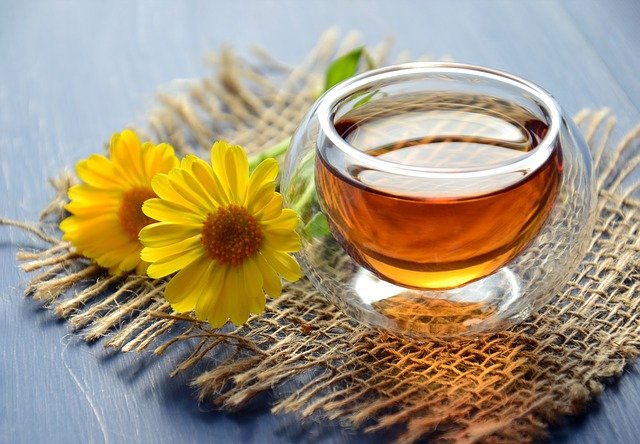
Image by Marina Pershina from Pixabay
One study showed that a twice-daily rinse with calendula tea reduces plaque by 50% and reduces gum pockets by 1-2 mm.7)”The Many Benefits of Calendula Officinalis (Marigold).” GreenMedInfo. July 03, 2015. Accessed July 27, 2019. https://www.greenmedinfo.com/blog/many-benefits-calendula-officinalis-marigold.
You May Also Enjoy:
“Calendula: Lymph Mover, Detoxifier, Cancer Fighter, and Skin Beautifier”
9. Add Supplements
Minerals are very important to overall health, but especially for teeth and gums. Diet alone might be enough, but many foods lack nutrients from being grown in nutrient-depleted soil. Supplements help fill the gaps. Check with a medical professional before adding supplements.
- Vitamins A, C, D, K
- Magnesium
- Gelatin
- Cod Liver Oil
- Herbal Infusions
10. Consider Herbal Breath Fresheners
- Chew on fresh parsley or mint leaves.
- Rub your teeth with orange peel to help fight tartar buildup and whiten teeth.
- Gargle with an old-fashioned solution of 1 cup water and 2 Tablespoons of apple cider vinegar. Combine and store in a glass jar. Shake well before use. Rinse with water after you finish. Repeat every 2-3 days for maximum value.
What Do You Think?
Do you use any of these natural tooth care techniques? Are there any others you recommend? Please let us know in the comments below, or join the conversation on natural dental care in our forum by clicking here.
You May Also Be Interested In:
- Are you at stage 3? Learn the 7 stages of becoming a Medicine Woman or Medicine Man.
- Take a free 4-part training to become a Medicine Woman or Medicine Man.
- Free e-Book: “Garlic: Your First Home Medicine”
- Free e-Book: “Top 10 Immune-Boosting Herbs”
- How to make Fire Cider (a.k.a. Four Thieves Tonic)
- Fight your next infection NATURALLY. Treating Infections Without Antibiotics
- Your teeth can heal themselves! Alternatives to Dentists
- Boost your immune system and fight off colds! Make your own elderberry syrup.
- Free e-Book: “The Ancient Art of Raw Vinegars”
- The #1 way to improve your health is to kick the sugar habit. Our free 7 Day Sugar Challenge can help!
__________________
The Grow Network is a participant in the Amazon Services LLC Associates Program, an affiliate program designed to provide a means for our team to earn fees for recommending our favorite products! We may earn a small commission, at no additional cost to you, should you purchase an item after clicking one of our links. Thanks for supporting TGN!

The Grow Network is a global network of people who produce their own food and medicine. We’re the coolest bunch of backyard researchers on Earth! We’re constantly sharing, discovering, and working together to test new paths for sustainable living—while reconnecting with the “old ways” that are slipping away in our modern world. We value soil, water, sunlight, simplicity, sustainability, usefulness, and freedom. We strive to produce, prepare, and preserve our own food and medicine, and we hope you do, too!
References
| ↑1, ↑2 | ”Poor Oral Health Increases Stroke Risk, UB Study Finds.” Poor Oral Health Increases Stroke Risk, UB Study Finds – University at Buffalo. October 25, 2000. Accessed July 27, 2019. http://www.buffalo.edu/news/releases/2000/10/4917.html. |
|---|---|
| ↑3 | ”Oral Health and Well-Being in the United JStates.” Ada.org. Accessed July 26, 2019. http://www.ada.org/~/media/ADA/Science and Research/HPI/OralHealthWell-Being-StateFacts/US-Oral-Health-Well-Being.pdf?la=en. |
| ↑4 | Wells, Katie. “Does Flossing Really Reduce Gum Disease and Cavities? Wellness Mama.” Wellness Mama®. July 22, 2019. Accessed July 27, 2019. https://wellnessmama.com/124376/flossing/. |
| ↑5 | ”Get the Facts: Drinking Water and Intake | Nutrition | CDC.” Centers for Disease Control and Prevention. Accessed July 27, 2019. https://www.cdc.gov/nutrition/data-statistics/plain-water-the-healthier-choice.html. |
| ↑6 | Gafner, Stefan, Chantal Bergeron, Jacquelyn R. Villinski, Markus Godejohann, Pavel Kessler, John H. Cardellina, Daneel Ferreira, Karine Feghali, and Daniel Grenier. “Isoflavonoids and Coumarins From Glycyrrhiza Uralensis: Antibacterial Activity against Oral Pathogens and Conversion of Isoflavans into Isoflavan-Quinones during Purification.” Journal of Natural Products74, no. 12 (2011): 2514-519. doi:10.1021/np2004775. |
| ↑7 | ”The Many Benefits of Calendula Officinalis (Marigold).” GreenMedInfo. July 03, 2015. Accessed July 27, 2019. https://www.greenmedinfo.com/blog/many-benefits-calendula-officinalis-marigold. |
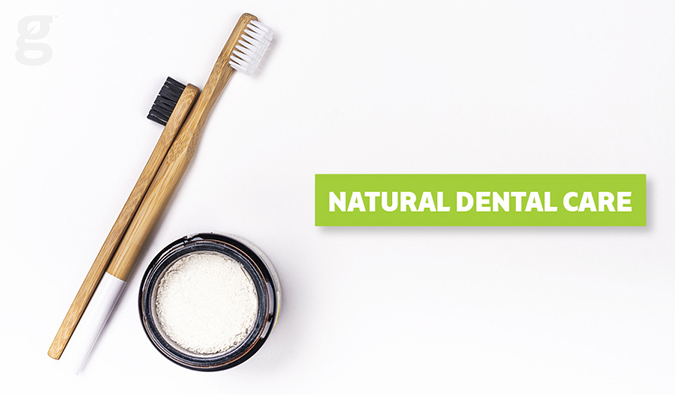

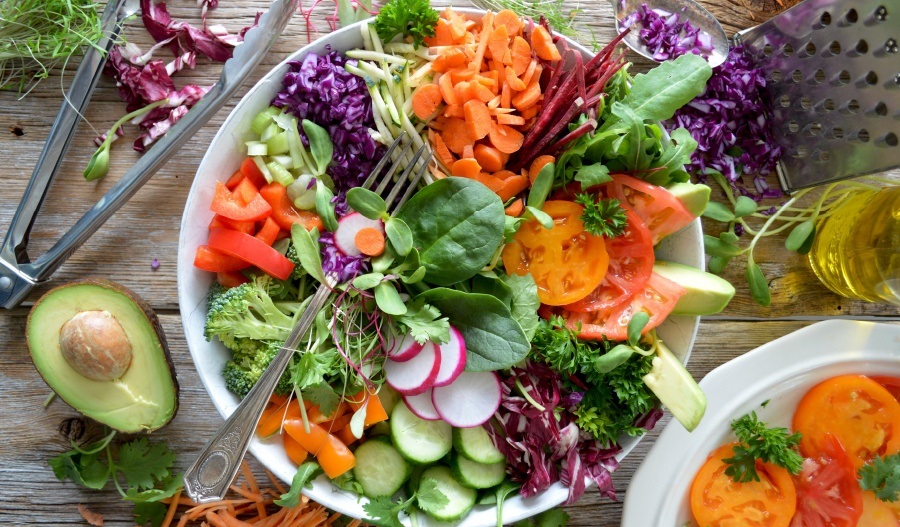


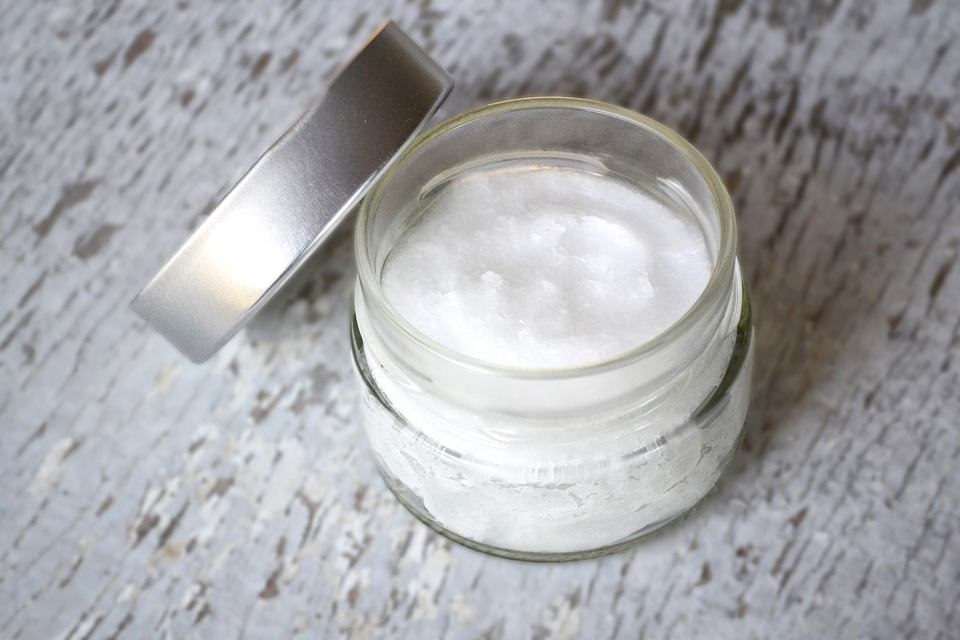
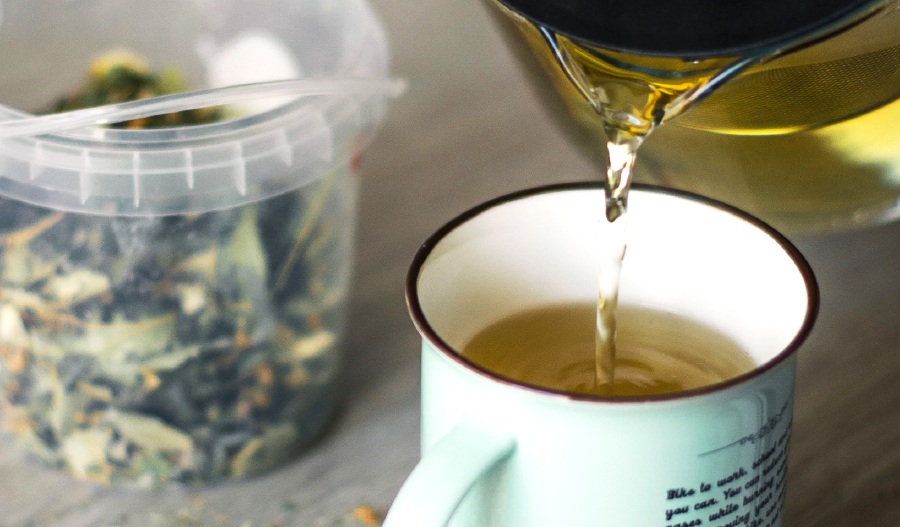







COMMENTS(5)
These are great tips. Which type of horsetail is proper to use?
I brush my teeth with baking soda mixed with green organic stevia leaf powder.
I am in desperate need of a remedy for sudden,extreme sensitivity! I bought a regular (yucky stuff) tube of toothpaste for sensitive teeth but I would sure rather go with something more clean and natural. I did notice that this cell salt helps that too. I would prefer repairing the underlying cause rather than just treating the symptom.
Ugh! Puppy helping with keyboard skills! The product is for trigeminal neuralgia and it’s called Bio23 by Bestmade.
My partner loves your tooth powder but I dislike mint flavors. I wish you sold a kit with licorice or fennel options as well. I would buy it!